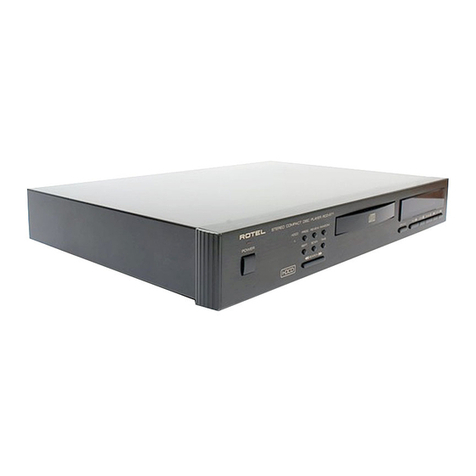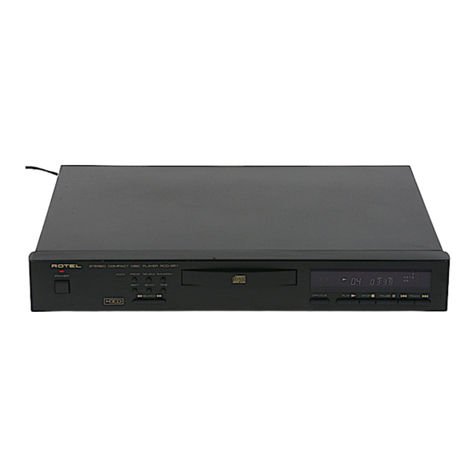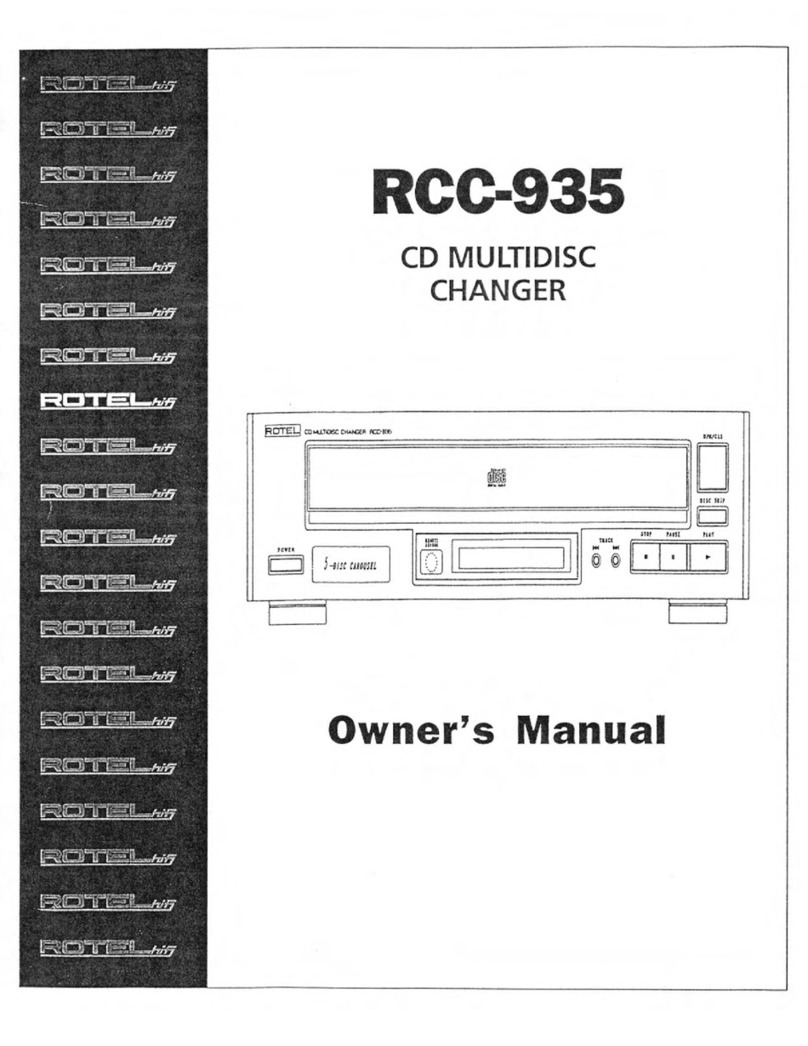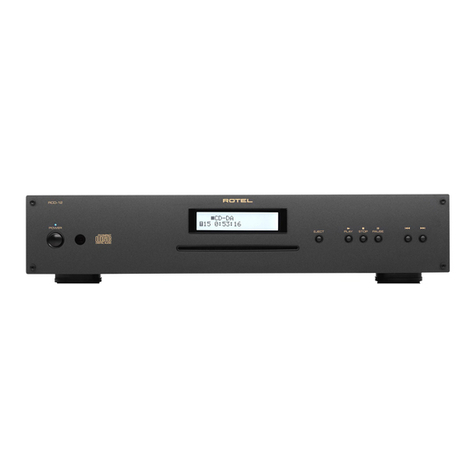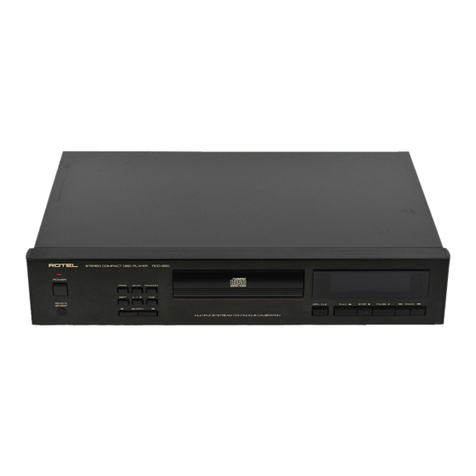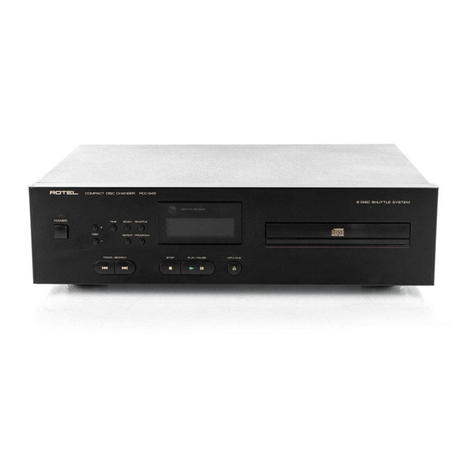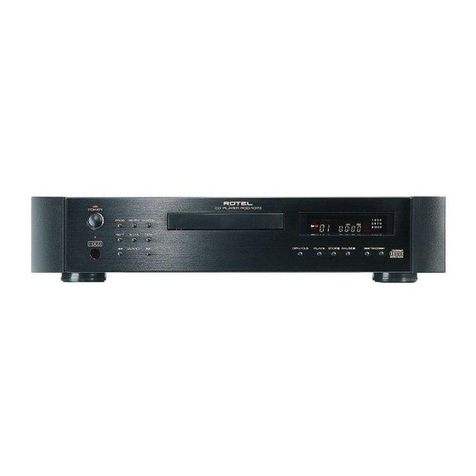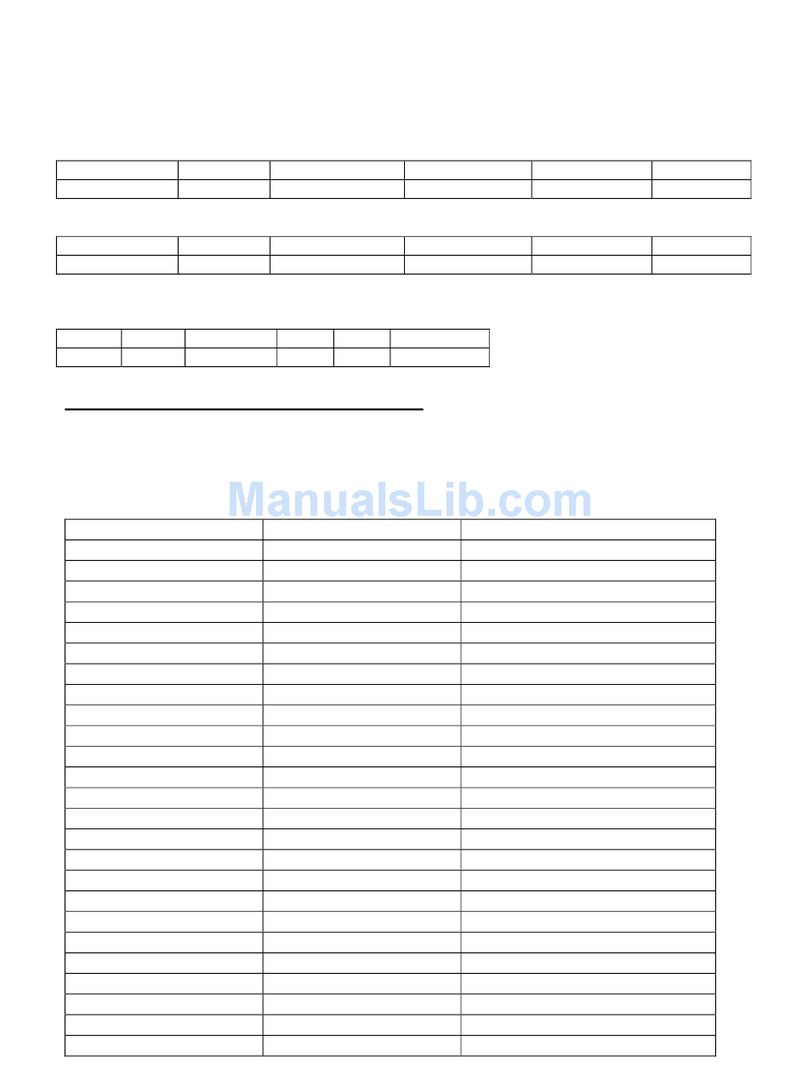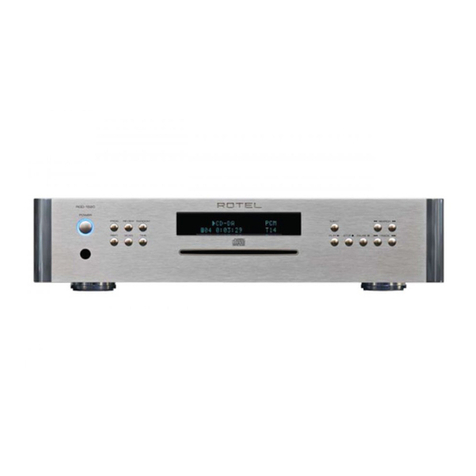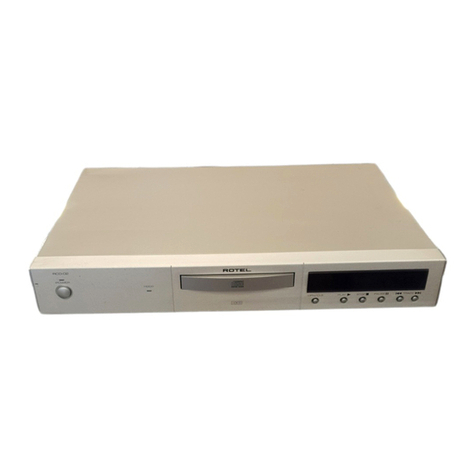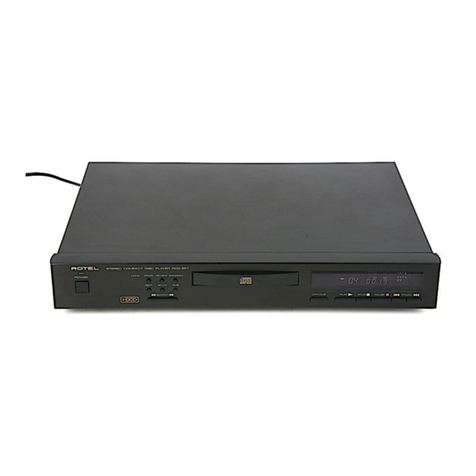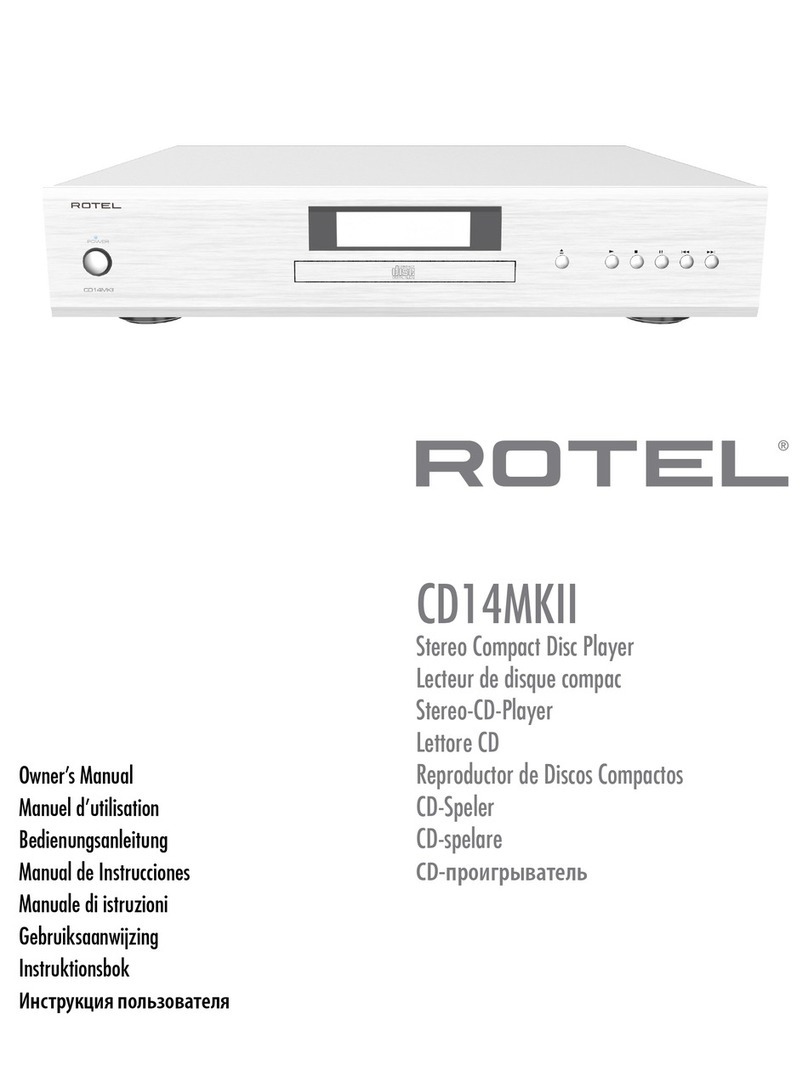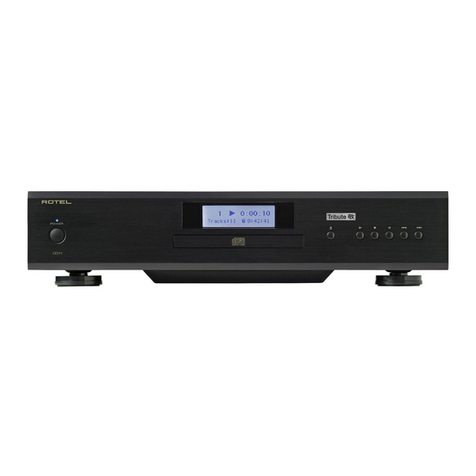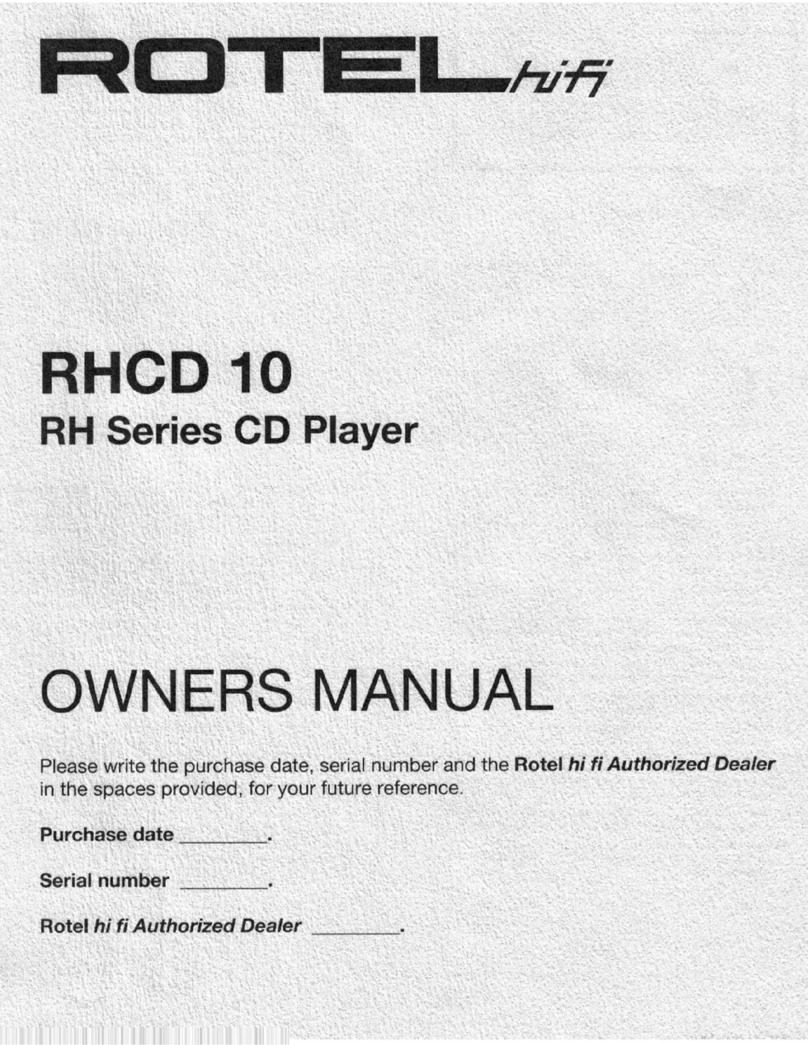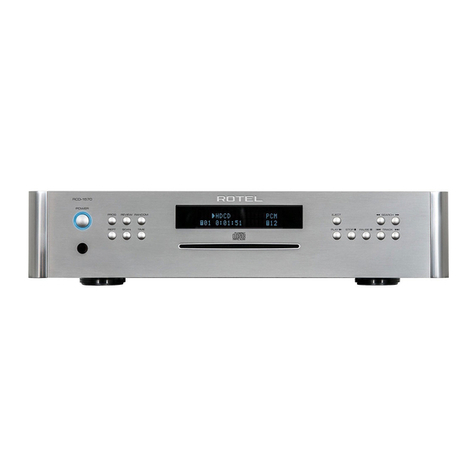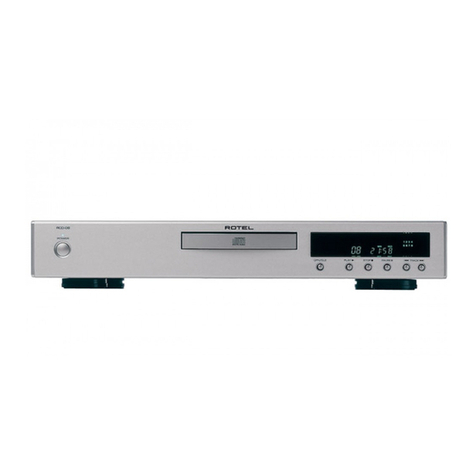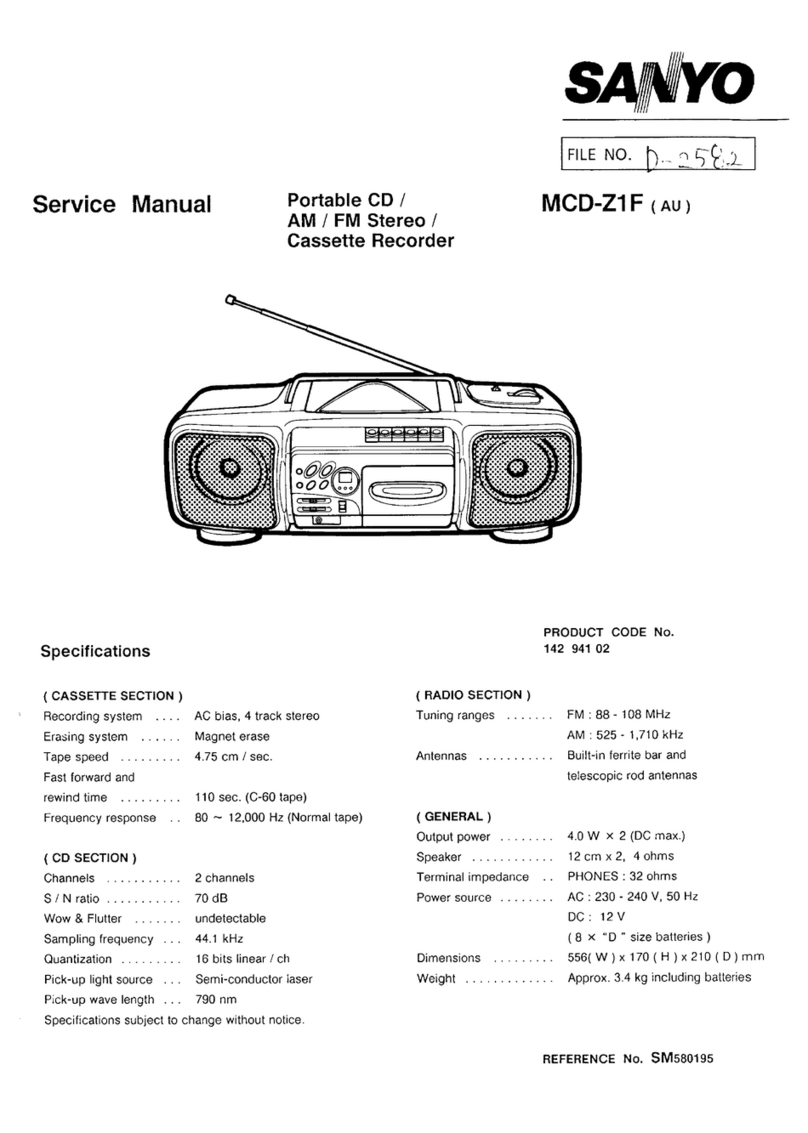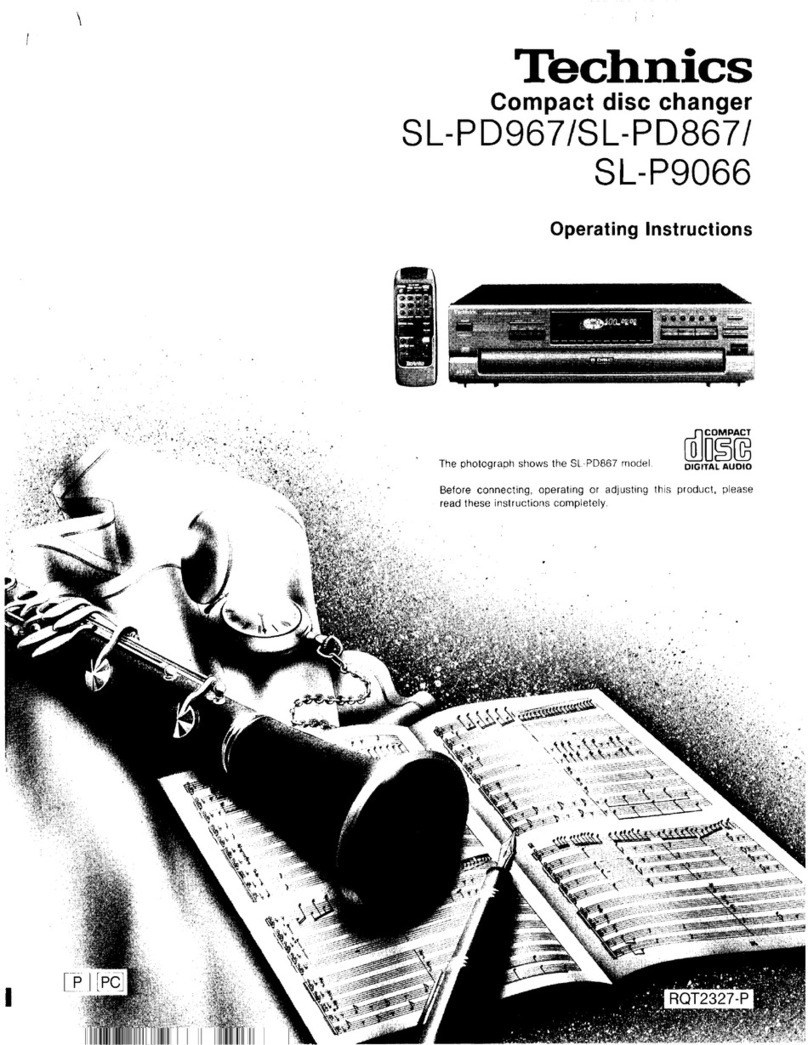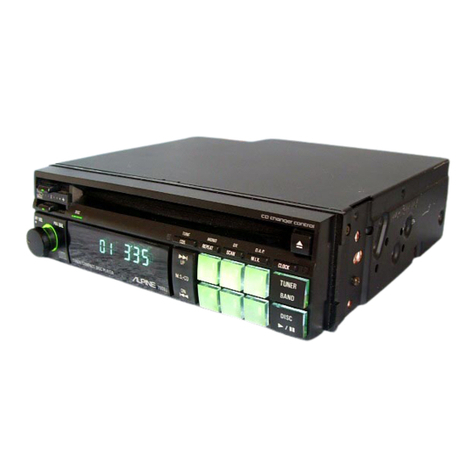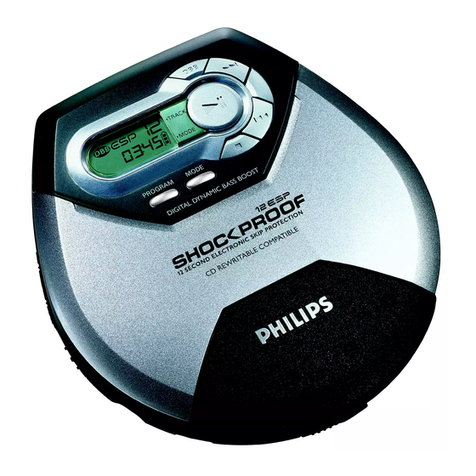8
PROGRAM Button
This button, labeled PROG, allows you to
memorize as many as 20 tracks on the cur-
rent disc for playback in a specific order. For
example, you could instruct the RCD-1072 to
play track 5, followed by track 3, followed by
track 8. To begin a program:
1. Insert a disc and press the OPEN/CLOSE
button to close the drawer. The RCD-1072
will read the contents of the disc.
2. Press the PROGRAM button on the front
panel or the remote control. The PROGRAM
indicator will light up in the Display, along
with “P:00” indicating that the unit is waiting
for the first track to be memorized.
3. To program tracks from the handheld re-
mote control, enter the first track number
using the DIRECT ACCESS buttons. Your
selection will be memorized automatically
and the Display indicator will change to
“P:01”, indicating that one track has been
memorized. Continue entering the rest of
your selections using the DIRECT ACCESS
buttons. Note that there is no need to press
the PROGRAM button as each selection is
memorized as it is entered.
4. To program tracks from the front panel,
select the first track number using the
TRACK buttons. The track number and the
program number in the display will flash
for 3 seconds. While the display is flashing,
press the PROGRAM button to memorize
your selection. Note that once the flashing
stops, you will no longer be able to memo-
rize your selection. To memorize additional
tracks, select them with the TRACK buttons,
pressing the PROGRAM button after each
selection.
Once you have memorized a play list, the
RCD-1072 remains in PROGRAM mode until
you open the disc drawer or press the STOP
button twice in succession. If you press the
PLAY button, the memorized program will play
instead of the entire disc, starting with the first
selection in the memorized list.
When a PROGRAM has been memorized, most
functions that would normally affect the entire
disc operate on just the memorized program.
For example, the TRACK buttons advance to
the next track in the memorized program, not
the next track on the disc. Likewise, the REPEAT
button (see below) continuously plays the
memorized program, not the entire disc.
REVIEW Button
This button is used to review the memorized
tracks in PROGRAM mode. Press the button
and the first memorized track number will
appear in order in the Display, flashing for
approximately five seconds. Pressing the
REVIEW button again while the track number
is flashing will continue the review sequence,
showing the next memorized track. Continue
pressing the REVIEW button to see the complete
memorized track list.
If you do not press the REVIEW button while
the track number is flashing, the review process
is terminated and the unit resumes whatever
mode it was in before you started to review,
except that the last reviewed track number will
remain active and shown in the display.
Note that you may remove a selection from the
play list during the review procedure using the
CLEAR button, as described below.
CLEAR Button
(remote only)
This button allows you to remove a track se-
lection from the memorized program play list
during the review procedure described above.
Follow the review procedure until the desired
track number is flashing. Then, instead of press-
ing the REVIEW button to continue, remove the
displayed track by pressing the CLEAR button
while the number is still flashing. You may then
continue the review procedure.
RANDOM Button
This instructs the CD player to play tracks from
the entire disc in random order. Once all of
the selections have been played once, the disc
will stop playing, unless the REPEAT Button
(see below) has been engaged, in which case
the random play will continue until the STOP
button is pressed. When the RANDOM button
is engaged, the word RANDOM appears in
the Display.
REPEAT Button
This button, labeled REPT allows you to repeat
the current track or the entire disc continuously
until the feature is cancelled by disengaging
the REPEAT button or pressing STOP. The
REPEAT button steps sequentially through the
available options. Press the button once and
the RCD-1072 will repeat just the current
track, displaying the indicators REPEAT 1 in
the Display. Press the button a second time
and the RCD-1072 will repeat the entire disc,
displaying REPEAT ALL in the Display. Press
the button a third time to cancel the REPEAT
function.
As noted above, REPEAT can be used in con-
junction with the RANDOM play feature.
Note: The REPEAT function is automatically
cancelled when the disc drawer is opened.
SCAN Button
This feature automatically plays the first ten
seconds of each track on the disc (or the memo-
rized program). To activate the feature, press the
SCAN button. The word INTRO appears in the
Display. To stop scanning and resume normal
operation at the current track, press the SCAN
button again or press the PLAY button.
TIME Button
Normally, the RCD-1072 displays the elapsed
time of the currently playing track. The TIME but-
ton allows you to step through two al-ternative
time displays. Pressing the button once displays
the time remaining in the current track, which
counts down as the track continues playing.
Pressing the button a second time displays the
time remaining on the entire disc (or memorized
program). Pressing the button a third time
reverts to the standard elapsed time display.
When the TIME feature is activated, the word
REMAIN appears in the Display.
